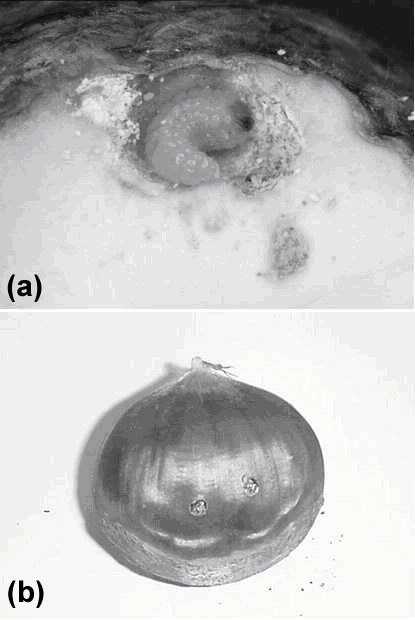Fig. 1 Damage to chestnuts by chestnut weevils.
 Fig. 1 Damage to chestnuts by chestnut weevils: (a) Chestnut weevil larva within a chestnut; (b) Chestnut with holes made by chestnut weevil larvae. |
ガンマ線照射によるクリシギゾウムシ (Curculio sikkimensis (Heller) (Coleoptera: Curculionidae)) とクリミガ (Cydia kurokoi (Amsel) (Lepidoptera: Tortricidae)) の幼虫の防除
The chestnut weevil, Curculio sikkimensis (Heller) (Coleoptera: Curculionidae), is distributed over Japan, Korea and Russia. This weevil is a major pest of chestnuts in Japan. Female weevils oviposit into chestnut seeds before the chestnut seeds are havested. The larvae grow within the seeds from which they emerge as last-instar larvae. The larvae cause damage to the quality of the chestnuts (Fig. 1).
The control of the chestnut weevil has up to now been dependent on fumigation of harvested chestnuts with methyl bromide. However, the usage of methyl bromide is to be phased out by 2005 in developed countries for most purposes due to its ozone layer depleting effects. Hence, development of an alternative method is urgently needed. Irradiation by gamma rays is thought to be a safe and residue-free alternative. Numerous researcher have studied the efficacy of gamma irradiation on other weevils, such as the maize weevil (Sitophilus zeamais Motschulsky), the rice weevil (S. oryzae (L.)) and the granary weevil (S. granarius (L.))1)-3). We predicted that gamma irradiation would effectively disinfest chestnuts contaminated with chestnut weevil larvae.
This paper reports on the effects of gamma irradiation on the emergence of chestnut weevil larvae from chestnut seeds.
 Fig. 1 Damage to chestnuts by chestnut weevils: (a) Chestnut weevil larva within a chestnut; (b) Chestnut with holes made by chestnut weevil larvae. |
Chestnuts (variety 'Tsukuba') were harvested on 30 September 2002 in Ibaraki prefecture. Treatments were carried out on 2 and 3 October. One hundred chestnuts were irradiated in a 60Co irradiator (Gammacell 220, Nordion, Canada) at a dose rate of 0.40 kGy/h. The doses were 50, 100, 200, 300, 400, 500 and 1000 Gy. After treatment, the chestnuts were kept at 25℃, 70% RH, and emerged larvae were counted daily. Treatments were replicated 3 times.
The data were subjected to probit analysis4) using the maximum likelihood method5).
Table 1 shows the number of emerged larvae from 100 chestnuts. Larvae of the nut fruit moth, Cydia kurokoi (Amsel) (Lepidoptera: Tortricidae), also emerged from the chestnuts. The number of emerged weevil larvae decreased with increasing dose, and no larvae emerged from chestnuts irradiated at doses of 400 Gy and higher. The number of emerged larvae of C. kurokoi also decreased with increasing dose, and no larvae emerged from chestnuts irradiated at doses of 300 Gy and higher, although few larvae emerged even from the untreated control.
The LD99.9 of the chestnut weevil larvae was estimated by probit analysis to be 497 Gy, so gamma irradiation would effectively disinfest chestnuts contaminated with chestnut weevil larvae at this dose. In this study, few larvae of C. kurokoi were observed, but this moth sometimes damages chestnuts more seriously than the chestnut weevil. Further research will be needed to estimate the LD99.9 of this moth.
 |
This study was supported financially by the Budget of Nuclear Research of the Ministry of Education, Culture, Sports, Science and Technology, based on the screening and counseling by the Atomic Energy Commission.
1) Aldryhim Y. N. and Adam E. E. : Efficacy of gamma irradiation against Sitophilus granarius (L.) (Coleoptera: Curculionidae), J. Stored Prod. Res., 35, 225-232 (1999).
2) Brown G. A. et al. : Gamma radiation effects on Sitophilus zeamais and S. granarius, J. Econ. Entomol., 65, 203-205 (1972).
3) Tilton E. W. et al. : Effects of gamma radiation on Rhyzopertha dominica, Sitophilus oryzae, Tribolium confusum and Lasioderma serricorne, J. Econ. Entomol., 59, 1393-1368 (1966).
4) Finney D. L. : Probit Analysis, 3rd Edition, Cambridge University Press, Cambridge (1971).
5) StatSoft Japan : STATISTICA TM User's Manual, 2nd Edition, StatSoft inc., Tokyo (in Japanese) (1999).
クリシギゾウムシ (Curculio sikkimensis (Heller)) の幼虫の出現に対するガンマ照射の影響を調査した。60Co ガンマ線照射装置 (Gammacell 220、Nordion、カナダ) を用い、100 個のクリを、0.40 kGy/h の線量率で、50、100、200、300、400、500 および 1000Gy で照射した。照射処理後のクリは 25℃、70%RH で貯蔵し、果実から出現する幼虫を毎日計数した。同時にクリミガ (Cydia kurokoi (Amsel)) に対する効果も観察した。クリシギゾウムシ幼虫の生残データをプロビット解析したところ、LD 99.9 は約 500Gy であると推測された。
(2004 年 7 月 6 日受理)
|
|